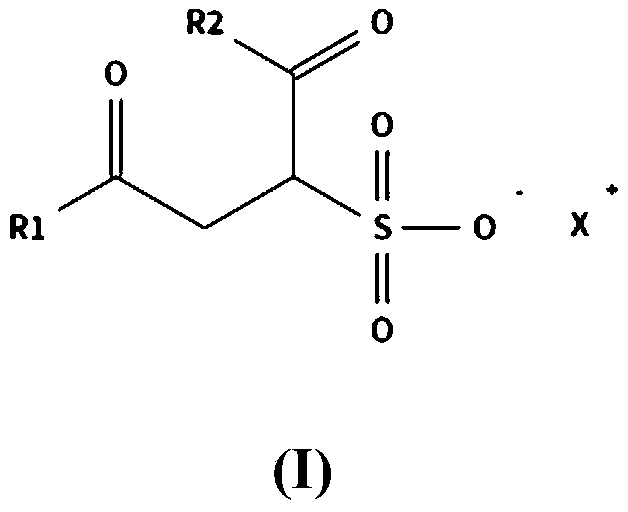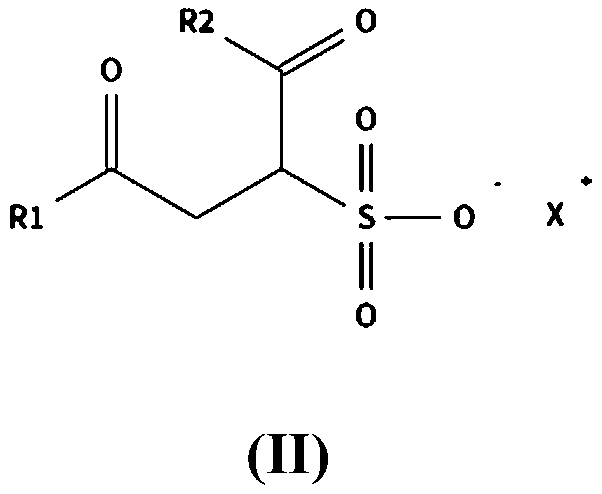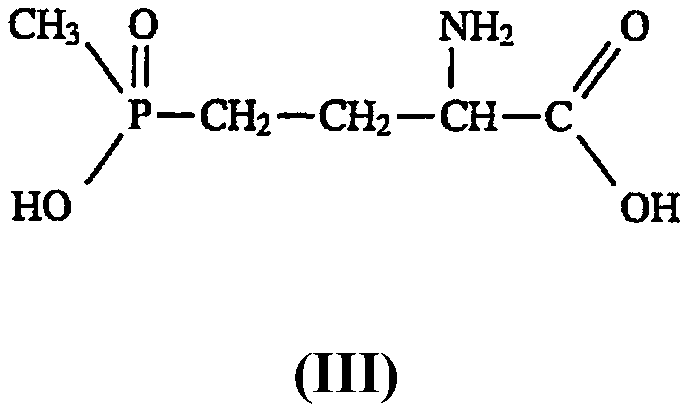Pesticide compositions
A pesticide composition, the technology of the composition, applied in the directions of biocides, animal repellents, plant growth regulators, etc.
- Summary
- Abstract
- Description
- Claims
- Application Information
AI Technical Summary
Problems solved by technology
Method used
Image
Examples
example 1
[0242] Example 1 - Stability Test
[0243] Glufosinate-ammonium compositions were prepared according to the formulations in the upper tables of Tables 1-5 below ("S" means sample and "CS" means comparative sample). Briefly, a glufosinate-ammonium ammonium salt base solution (50 wt%) was first prepared and the pH was adjusted to the range of 5-7. Then, this base solution is mixed with surfactants and water to obtain the final composition. The stability of the composition was tested at 54°C, 20°C, 0°C and -10°C, respectively. The appearance of the compositions was observed after two weeks (for 54°C and 20°C) or one week (for 0°C and -10°C). The results are shown in the lower part of Tables 1-5.
[0244] Table 1
[0245]
[0246] Table 2
[0247]
[0248]
[0249] table 3
[0250]
[0251] Table 4
[0252]
[0253] table 5
[0254]
[0255] The results show that the compositions of the present invention can remain stable at various temperatures. In cont...
example 2
[0256] Example 2 - Efficacy Test
[0257] Glufosinate-ammonium compositions were prepared according to the formulations in the upper tables of Tables 6-10 below. The efficacy of the preparation was tested on crabgrass. When the plants reached the 3-leaf stage, the plants were grown at room temperature and sprayed with the glufosinate-ammonium formulation. The dosage of the glufosinate-ammonium formulation was 60 ml / acre (200 g active / L). Groups of untreated plants were used as controls.
[0258] In order to assess the herbicidal efficacy, all tested plants were examined by a skilled technician who recorded the percent inhibition, for each treatment group (triplicate) by comparison with the control group (untreated plants, in triplicate). Visual measures of effectiveness. An inhibition rate of 0% indicates no killing and an inhibition rate of 100% indicates complete death of all plants. The results are shown in the lower part of Tables 6-10 below:
[0259] Table 6
[026...
example 3
[0271] Example 3 - Viscosity Test
[0272] Generally, pesticide formulations with medium viscosity are preferred by users. Preferably, the viscosity of the pesticide formulation is in the range of 100 to 800 mPa.s., more preferably in the range of 100 to 400 mPa.s. The viscosities of formulations containing a single sulfosuccinate surfactant were compared to formulations containing a combination of sulfosuccinate surfactants. Viscosity was measured on a Brookfield DV-II viscometer by using a No. 4 spindle, 100 rpm, at 20°C. The formulations tested and viscosity results are shown in Tables 11 and 12 below.
[0273] Table 11
[0274]
[0275] Table 12
[0276]
[0277] The results show that formulations according to the invention containing a sulfosuccinate surfactant component exhibit a satisfactory viscosity. Without wishing to be bound by theory, it is believed that the alkyl sulfosuccinate monoester and the fatty alcohol polydicarboxylate are Combinations of alco...
PUM
 Login to View More
Login to View More Abstract
Description
Claims
Application Information
 Login to View More
Login to View More - R&D
- Intellectual Property
- Life Sciences
- Materials
- Tech Scout
- Unparalleled Data Quality
- Higher Quality Content
- 60% Fewer Hallucinations
Browse by: Latest US Patents, China's latest patents, Technical Efficacy Thesaurus, Application Domain, Technology Topic, Popular Technical Reports.
© 2025 PatSnap. All rights reserved.Legal|Privacy policy|Modern Slavery Act Transparency Statement|Sitemap|About US| Contact US: help@patsnap.com



